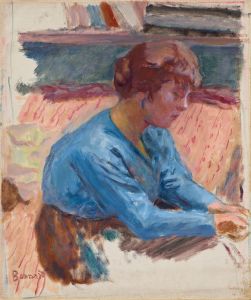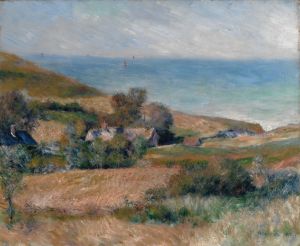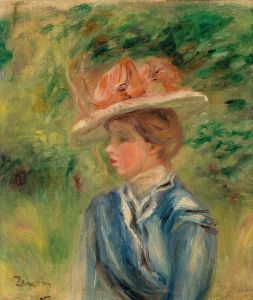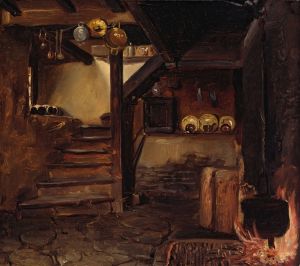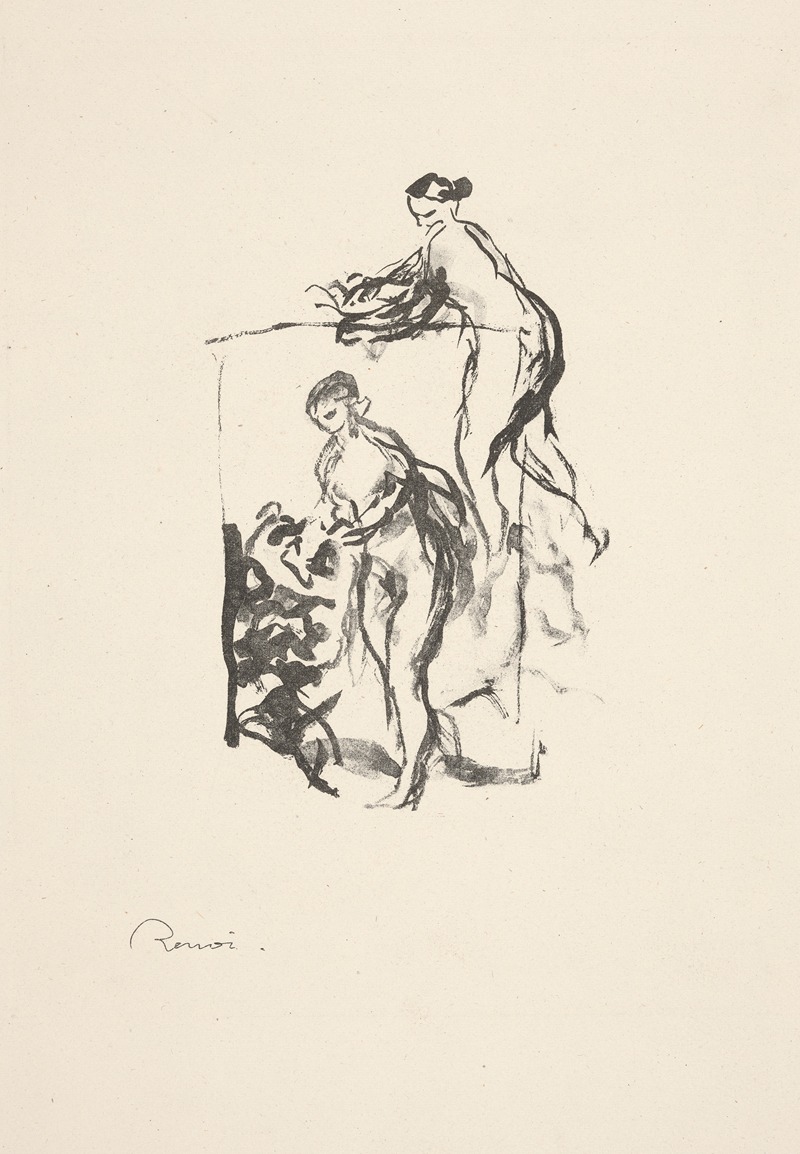
Femme au cep de vigne
A hand-painted replica of Pierre-Auguste Renoir’s masterpiece Femme au cep de vigne, meticulously crafted by professional artists to capture the true essence of the original. Each piece is created with museum-quality canvas and rare mineral pigments, carefully painted by experienced artists with delicate brushstrokes and rich, layered colors to perfectly recreate the texture of the original artwork. Unlike machine-printed reproductions, this hand-painted version brings the painting to life, infused with the artist’s emotions and skill in every stroke. Whether for personal collection or home decoration, it instantly elevates the artistic atmosphere of any space.
Pierre-Auguste Renoir's Femme au cep de vigne (translated as Woman by the Vine-Stem) is a painting created by the renowned French Impressionist artist. Renoir, celebrated for his vibrant use of color and light, often depicted scenes of leisure, landscapes, and portraits, with a particular focus on the human figure. This work is an example of his exploration of the female form, a recurring theme in his oeuvre.
The painting portrays a woman standing beside or near a vine-stem, a natural element that reflects Renoir's interest in integrating figures with their surroundings. The composition highlights Renoir's ability to capture the softness of human skin and the interplay of light and shadow, which became hallmarks of his style. The use of warm, rich tones and fluid brushstrokes is characteristic of Renoir's Impressionist period, during which he sought to convey the immediacy and beauty of the moment.
The exact date of creation for Femme au cep de vigne is not definitively documented, but it is believed to have been painted during the late 19th century, a time when Renoir was actively contributing to the Impressionist movement. This period saw Renoir and his contemporaries, such as Claude Monet and Edgar Degas, challenging traditional academic painting by focusing on modern life and experimenting with innovative techniques.
As with many of Renoir's works, the identity of the woman depicted in the painting is not explicitly recorded. Renoir often painted models, friends, or family members, but without concrete evidence, her identity remains unknown. The setting, featuring the vine-stem, suggests a connection to nature, a motif Renoir frequently revisited in his works.
The painting is part of Renoir's broader body of work that emphasizes the harmony between humanity and the natural world. His approach to the female figure, often idealized and romanticized, reflects his admiration for beauty and sensuality. Renoir's treatment of the subject in Femme au cep de vigne aligns with his philosophy of art as a source of joy and pleasure.
Details about the current location or ownership of Femme au cep de vigne are not widely available in public records. Renoir's works are housed in major museums and private collections worldwide, and this painting may reside in one of these settings.
While Femme au cep de vigne may not be as widely recognized as some of Renoir's other masterpieces, it remains a testament to his skill in capturing the essence of his subjects and his dedication to the Impressionist ideals of light, color, and emotion.






